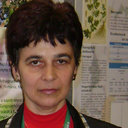Histological and antimicrobial study of Ononis arvensis L.
Atslēgvārdi
Abstrakts
In this study field restharrow (Ononis arvensis) was investigated for histological and antimicrobial features. The aerial part and the root were embedded in synthetic resin and investigated following sectioning by a rotation microtome. The antimicrobial activity and minimum inhibitory concentration of the solvent fractions of the aerial part were studied against four bacterial strains and one fungus. According to histology, the root covered by rhizodermis contains contiguous vascular elements, which are surrounded by sclerenchyma cells. The epidermis cells are anisodiametric in the stem, sepal, and petal. The bundles of the stem form a Ricinus type thickening. The adaxial side of the heterogeneous leaf is covered by unbranching non-glandular and capitate glandular trichomes. The stipule, petiole, sepals and petals are isolateral having mesomorphic stomata. Pollen grains are tricolpate. The different extracts of the herb showed antimicrobial activity against Escherichia coli, Pseudomonas aeruginosa, Salmonella Typhimurium, Staphylococcus aureus, and Candida albicans. Data show that the extracts of the leaf contain compounds which may be responsible for the antifungal effect, while extracts obtained from display against the tested bacteria, except Escherichia coli. Further studies are required to complete the phytochemical analysis and identify the antimicrobial compounds of extracts.



